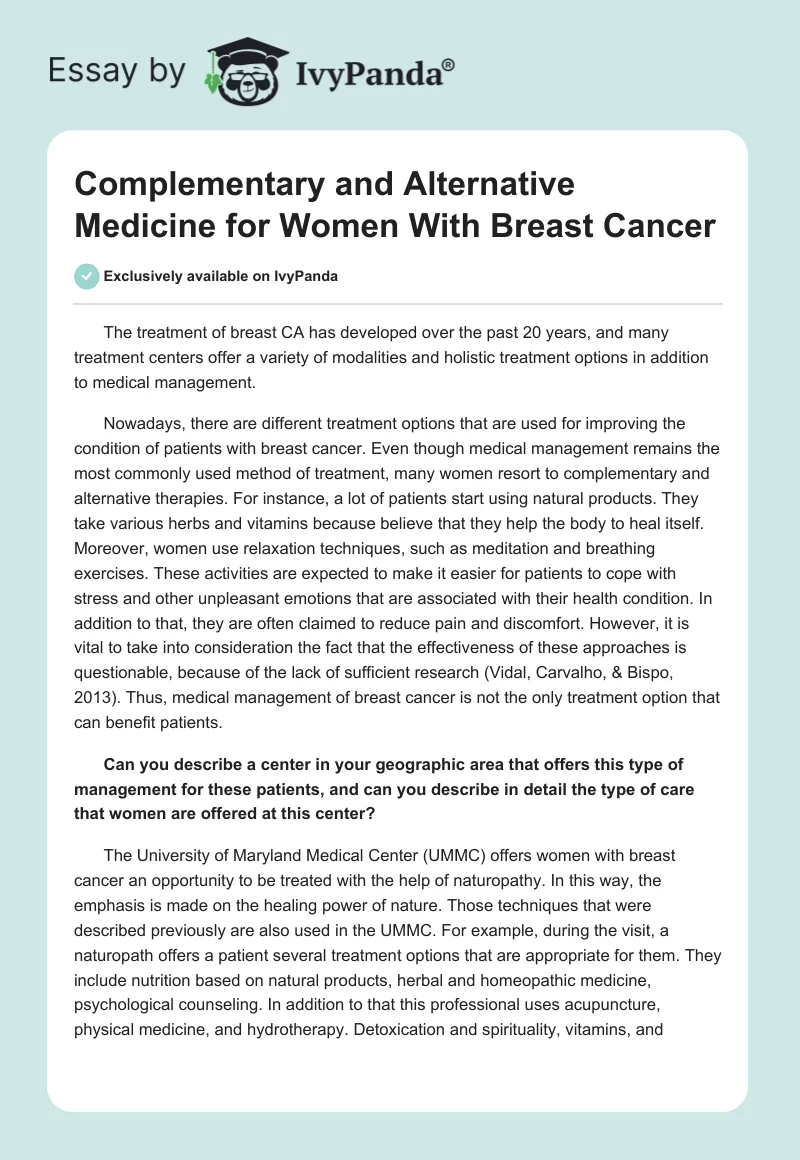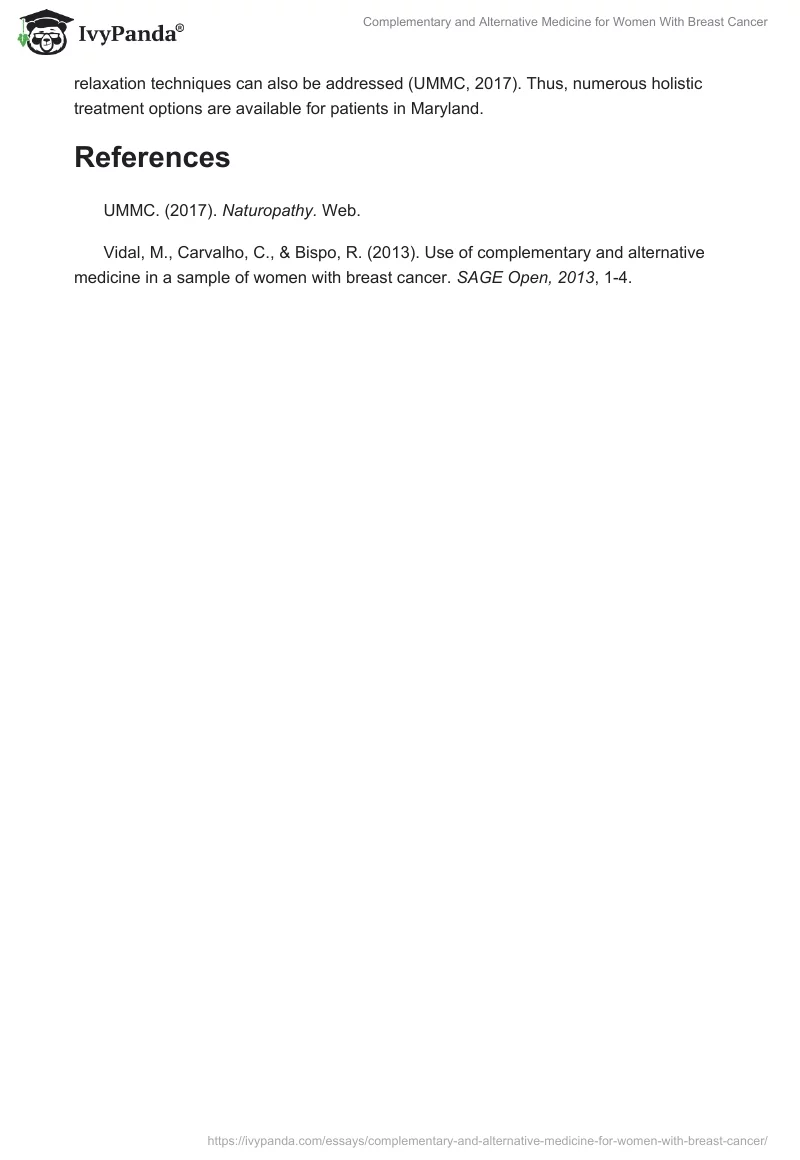The treatment of breast CA has developed over the past 20 years, and many treatment centers offer a variety of modalities and holistic treatment options in addition to medical management.
Nowadays, there are different treatment options that are used for improving the condition of patients with breast cancer. Even though medical management remains the most commonly used method of treatment, many women resort to complementary and alternative therapies. For instance, a lot of patients start using natural products. They take various herbs and vitamins because believe that they help the body to heal itself. Moreover, women use relaxation techniques, such as meditation and breathing exercises. These activities are expected to make it easier for patients to cope with stress and other unpleasant emotions that are associated with their health condition. In addition to that, they are often claimed to reduce pain and discomfort. However, it is vital to take into consideration the fact that the effectiveness of these approaches is questionable, because of the lack of sufficient research (Vidal, Carvalho, & Bispo, 2013). Thus, medical management of breast cancer is not the only treatment option that can benefit patients.
Can you describe a center in your geographic area that offers this type of management for these patients, and can you describe in detail the type of care that women are offered at this center?
The University of Maryland Medical Center (UMMC) offers women with breast cancer an opportunity to be treated with the help of naturopathy. In this way, the emphasis is made on the healing power of nature. Those techniques that were described previously are also used in the UMMC. For example, during the visit, a naturopath offers a patient several treatment options that are appropriate for them. They include nutrition based on natural products, herbal and homeopathic medicine, psychological counseling. In addition to that this professional uses acupuncture, physical medicine, and hydrotherapy. Detoxication and spirituality, vitamins, and relaxation techniques can also be addressed (UMMC, 2017). Thus, numerous holistic treatment options are available for patients in Maryland.
References
UMMC. (2017). Naturopathy. Web.
Vidal, M., Carvalho, C., & Bispo, R. (2013). Use of complementary and alternative medicine in a sample of women with breast cancer. SAGE Open, 2013, 1-4.


